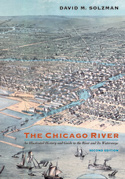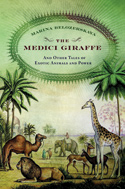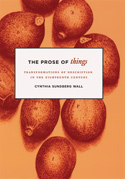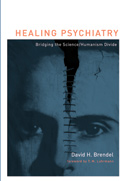|
||
      |
Peer Review ::
On the shelf
 The Magazine publishes a selection of
books by alumni authors. For additional alumni books, see In
Their Own Worlds.
The Magazine publishes a selection of
books by alumni authors. For additional alumni books, see In
Their Own Worlds.
Kicking the Carbon Habit: Global Warming and the Case for Renewable and Nuclear Energy, by William Sweet, AB’68, AM’69, Columbia University Press, 2006. Science journalist Sweet points to coal and its carbon emissions as the chief culprit behind environmental problems. Fuel-cell technology and solar power, he argues, will not be implemented quickly enough. Natural-gas costs are too prohibitive. So what’s left? Wind generation and nuclear plants, says Sweet, who argues that disasters like Chernobyl are abnormalities in a safe history of nuclear-energy use.
Earl B. Dickerson: A Voice for Freedom and Quality, by professor emeritus John Hope Franklin (foreword), Robert J. Blakely, and Marcus Shepard, AM’90, Northwestern University Press, 2006. The first black graduate of the University of Chicago Law School and the city’s first black alderman, Dickerson, JD’20, took on Chicago’s racial inequities during the mid-1900s while also heading the nation’s largest black-owned insurance company. A longtime resident of Hyde Park, he tried to establish mixed neighborhoods on the South Side following the Supreme Court’s 1940 decision against discriminatory housing covenants.
 Poetry, Politics, and Culture: Argument in the
Work of Eliot, Pound, Stevens, and Williams, by Harold Kaplan,
AB’37, AM’38, Transaction
Publishers, 2006. Linked by their early participation in the modernist
movement, poets T. S. Eliot, Ezra Pound, Wallace Stevens, and William Carlos
Williams eventually took very different career paths. Kaplan studies the
social and cultural impacts on each poet’s work in this comparative
analysis.
Poetry, Politics, and Culture: Argument in the
Work of Eliot, Pound, Stevens, and Williams, by Harold Kaplan,
AB’37, AM’38, Transaction
Publishers, 2006. Linked by their early participation in the modernist
movement, poets T. S. Eliot, Ezra Pound, Wallace Stevens, and William Carlos
Williams eventually took very different career paths. Kaplan studies the
social and cultural impacts on each poet’s work in this comparative
analysis.
The Chicago River: An Illustrated History and Guide to the River and Its Waterways, Second Edition, by David M. Solzman, AB’53, PhD’66, University of Chicago Press, 2006. “The river has seen it all, done it all, carried it all,” writes Solzman, detailing the geography, history, and people that constitute Chicago’s 156-mile-long river system. In this second edition, he talks of cleaner and “more inviting” waterways since he first wrote in 1998, and further outlines Chicago’s environmental responsibility to ensure the river’s healthy and productive future.
 Passionate Minds, by David Bodanis, AB’77, Crown Publishers,
2006. A decade-long love affair between French philosopher Voltaire and
scientist Emilie du Châtelet forms the backdrop of Bodanis’s
look at social progress in early 18th-century Europe. One of the few self-taught
female academics in a time of harsh gender inequality, du Châtelet
emerged with Voltaire as key in forging the path toward the Enlightenment.
Passionate Minds, by David Bodanis, AB’77, Crown Publishers,
2006. A decade-long love affair between French philosopher Voltaire and
scientist Emilie du Châtelet forms the backdrop of Bodanis’s
look at social progress in early 18th-century Europe. One of the few self-taught
female academics in a time of harsh gender inequality, du Châtelet
emerged with Voltaire as key in forging the path toward the Enlightenment.
The Medici Giraffe, by Marina Belozerskaya, AM’92, PhD’97, Little, Brown and Company, 2006. When Julius Caesar returned from his conquests bearing a giraffe, enchanted Romans dubbed the animal “camelopardalis,” believing it was a cross between a camel and a leopard. The Medici Giraffe examines the historical importance of exotic animals in war, diplomacy, and royal affairs, spanning ancient times to present-day relations between superpowers.
Dudley Murphy, Hollywood Wild Card, by Susan Delson, AB’72, University of Minnesota Press, 2006. Murphy was a little-known but influential filmmaker who cut an unorthodox swath through early 20th-century culture, collaborating with the likes of Man Ray, Duke Ellington, and William Faulkner. Delson traces his erratic career from the “avant-garde heights of Ballet mécanique to the unparalleled drivel of Confessions of a Co-Ed.”
 Generation Me: Why Today’s Americans Are More Confident, Assertive,
Entitled--—and More Miserable Than Ever Before, by Jean M.
Twenge, AB’93, AM’93, Free Press, 2006. In an age of blogs, Dr. Phil,
and personal memoirs, Twenge argues that society has grown increasingly
self-absorbed. In Generation Me, she concludes that platitudes such as “believe
in yourself and anything is possible” make today’s 20- and
30-somethings out of touch with reality.
Generation Me: Why Today’s Americans Are More Confident, Assertive,
Entitled--—and More Miserable Than Ever Before, by Jean M.
Twenge, AB’93, AM’93, Free Press, 2006. In an age of blogs, Dr. Phil,
and personal memoirs, Twenge argues that society has grown increasingly
self-absorbed. In Generation Me, she concludes that platitudes such as “believe
in yourself and anything is possible” make today’s 20- and
30-somethings out of touch with reality.
The Prose of Things: Transformations of Description in the Eighteenth Century, by Cynthia Sundberg Wall, AM’87, PhD’92, University of Chicago Press, 2006. Looking at the prose works of John Bunyan, Daniel Defoe, and David Hume, among others, Wall analyzes the 18th-century fascination with objects as it relates to the microscope’s invention, an expanding consumer culture, and the philosophical attitudes of the era.
 The Emergency of Being: On Heidegger’s Contributions to Philosophy,
by Richard Polt, AM’89, PhD’91, Cornell University Press, 2006.
In the esoteric Contributions to Philosophy, Heidegger argues that being
occurs as an “appropriation.” What does appropriation mean
for time, space, and human existence? Polt finds the roots of the concept
in Heidegger’s earlier philosophy.
The Emergency of Being: On Heidegger’s Contributions to Philosophy,
by Richard Polt, AM’89, PhD’91, Cornell University Press, 2006.
In the esoteric Contributions to Philosophy, Heidegger argues that being
occurs as an “appropriation.” What does appropriation mean
for time, space, and human existence? Polt finds the roots of the concept
in Heidegger’s earlier philosophy.
Healing Psychiatry: Bridging the Science/Humanism Divide, by David H. Brendel, PhD’99, MIT Press, 2006. Are mental illnesses simply a matter of brain chemistry, or is the influence of culture and society at the heart of such problems? To fully heal patients, Brendel says, scientific and humanist approaches must be synthesized.